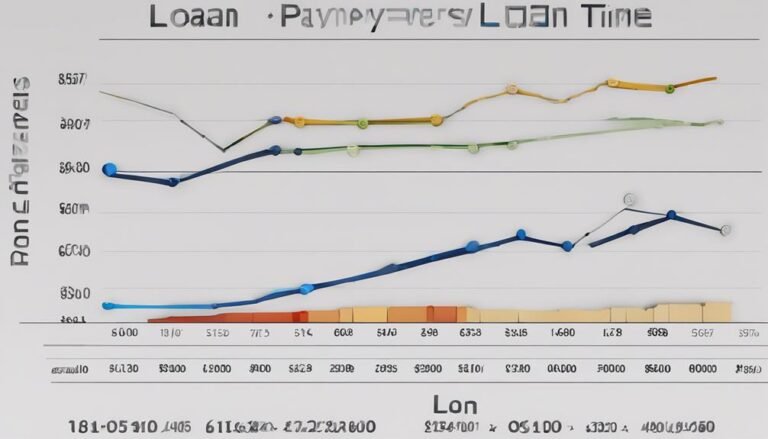Degrees of Freedom in Statistics Explained: Formula and Example
Understanding degrees of freedom in statistics is essential for accurate analysis. By subtracting one from the sample size, you establish the degrees of freedom. This calculation guarantees the right amount of independent values, improving reliability and validity in conclusions. Practical examples show how constraints influence data analysis and the importance in statistical tests. Applications span various fields like finance and healthcare, aiding in data-driven decisions and validating research. Degrees of freedom define independent values, affecting outcomes of statistical tests greatly. If you seek further insights into this fundamental concept, explore its formula, examples, and implications in statistical analysis.
Key Takeaways
- Degrees of freedom are calculated by subtracting one from the sample size.
- Df ensures accuracy in statistical analysis by determining the number of independent values.
- Understanding Df enhances the reliability and validity of statistical conclusions.
- It is crucial in statistical tests to accurately interpret data variability.
- Df impacts the flexibility in selecting data points and influences outcomes in analysis.
Definition of Degrees of Freedom
Defining degrees of freedom involves determining the maximum number of independent values within a data sample, essential for statistical analysis and parameter estimation.
Degrees of freedom play a critical role in statistical significance by allowing for the assessment of data variability. They indicate the level of freedom in selecting data points before constraints are necessary, impacting the validity of statistical tests.
Understanding degrees of freedom is vital for interpreting the flexibility in choosing data points within a sample and how this affects the overall analysis.
Calculation Formula and Method
The calculation formula and method for determining degrees of freedom involve subtracting one from the sample size to establish the maximum number of independent values available for statistical analysis.
Steps for Degrees of Freedom Calculation:
- Identify the sample size (N) in the dataset.
- Subtract one (1) from the sample size to get the degrees of freedom (Df).
- Guarantee accuracy in determining the number of independent variables for analysis.
- Utilize statistical formula and data interpretation techniques for precise results.
This method guarantees accuracy in statistical analysis by providing the appropriate number of independent values available for estimation. Following these steps enhances the reliability and validity of statistical conclusions.
Practical Examples in Statistics
Illustrating the real-world application of statistical concepts enhances understanding and proficiency in data analysis. Practical examples in statistics provide insights into real-world applications and practical implications of degrees of freedom.
For instance, in business decision-making, understanding degrees of freedom can help in analyzing how choices in one variable impact outcomes in another. Selecting baseball players based on specific criteria, such as batting averages, showcases how constraints influence the degrees of freedom in data analysis. These examples highlight the importance of degrees of freedom in statistical tests like t-tests and chi-square tests, where constraints play a significant role in determining parameters or relationships.
Applications in Statistical Analysis
Applications of statistical analysis involve leveraging data to derive meaningful insights and make informed decisions based on quantitative evidence.
- Real-world applications: Statistical analysis is used in fields such as finance, healthcare, marketing, and social sciences to draw conclusions and predict trends.
- Statistical inference: By analyzing data and applying statistical tests, researchers can make inferences about populations based on sample data.
- Decision-making: Statistical analysis helps in making data-driven decisions, minimizing risks, and maximizing opportunities.
- Research validation: Statistical analysis is essential for validating research findings, ensuring the reliability and accuracy of results.
Significance and Implications
Degrees of freedom play a pivotal role in statistical analysis by defining the maximum number of independent values that can be varied within an analysis sample.
In real-world applications, degrees of freedom signify the flexibility in selecting data points before constraints are necessary, demonstrating the importance in choosing items within a set.
This statistical significance highlights how many units can be chosen randomly before specific values must be adhered to, showcasing the impact of each variable on outcomes.
Understanding the significance and implications of degrees of freedom is vital in accurately interpreting statistical tests, ensuring that data analysis aligns with predetermined outcomes and constraint requirements.
This concept extends beyond statistics, influencing decision-making processes in various fields.
Conclusion
To sum up, degrees of freedom in statistics are similar to the keys on a piano, revealing the potential for a multitude of independent variables within a dataset.
By understanding the calculation formula and practical examples, one can grasp the significance and implications of degrees of freedom in statistical analyses.
Mastering this foundational concept is essential for accurate and reliable statistical inferences.







